Hand Tools
Your typical workday is going to require the use of hand-tools, most of which are provided by the Forest Preserve District, with some being my own personal steward tools. hand-tools require no special training, so can be used by any volunteer. If you have your own hand-tool that you prefer to use, then you are free to bring that along too.
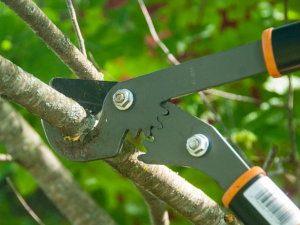
Loppers
Bypass loppers are the most commonly used tool, so called because there are two blades that pass each other when making a cut. These tools are for dealing with living branches up to 1 inch in diameter. Some loppers are able to handle 2 inch stems, and these will have larger blades and often gears for increased torque. Attempting to cut through branches that are thicker than the specification will prove more challenging, and runs the risk of chipping or breaking the blade. The same is true for cutting dead branches. If you find yourself struggling, then perhaps a saw is need instead.
Anvil loopers are similar to bypass, but only have one cutting edge that presses up against the other side – the anvil. These are best use for cutting dead branches. There are no anvil loppers are Oakhurst workdays
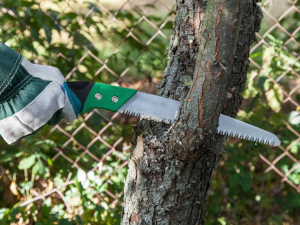
Pruning Saws
Pruning saws are the second major tool in our arsenal, used to cut branches too big for the loppers. Most of these saws are designed to cut on the pull stroke, so that is when pressure should be applied. Less force should be used with the push stroke, which will reduce the risk of the blade bending or snapping. I have a handful of pruning saws from the District - which break easily - as well as my own corona folding saw.
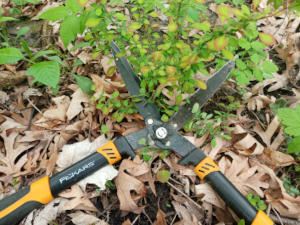
Sheers
As part of my teasel effort, I requested several garden shears from the district, which I use to cut down stems. Obviously, there is a limitation in the thickness they can cut through, but they are quite effective in dealing with teasel resprouts before they reflower. I have also put them to work cutting sweetclover, burdock, giant reed and barberry.
The long cutting edge of sheers means less precision is needed to cut multiple stems, unlike with loppers, which require more positioning.
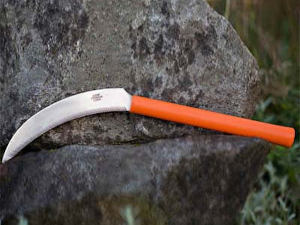
Hand Sickles
The hand sickle is perhaps the best multi-use tool I have, and one I provide myself. To date, I have used it for:
While one hand grips the target plant, the other wields the sickle and slices through the stems. The advantage of a sickle is that you are then left holding part of the plant, which can either be collected or disposed of in a pile. With barberry, I step on the shrub to pin the stems to the ground, then use two hands to slice through the stems. All of my four sickles have a serrated edge which make cutting through woody stems possible.
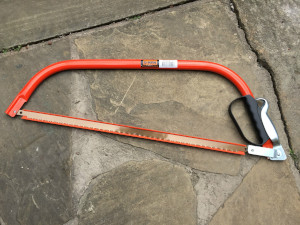
Bow Saws
Bow saws are great for dealing with larger trumps and dead wood, but their larger size makes them less practical when cutting branches in tight spots. Unlike pruning saws, they cut on both the cut and pull stroke.
I currently have no bowsaws at my workdays. I was originally provided with one, but the blade constantly twisted, rendering it useless. Perhaps I need to give the bowsaw a second chance.
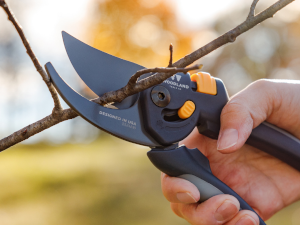
Hand Pruners
Hand pruners are used to cut small stems with a single hand, unlike loopers which require two. These are best used for cutting resprouts when the other hand can immediately apply herbicide to the cut end. However, the repetitive squeezing of the pruner will leave your hand muscles tired and achy. I was initially given three, but two were offered up to the wood fairies.
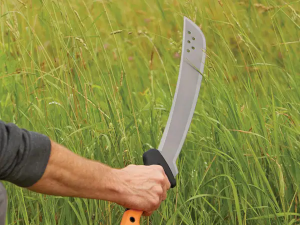
Machete
I purchased a machete early on to chop down teasel, as loppers were slow to use - but I don’t use it much these days. I think the blade is too dull, and was difficult to sharpen. I acquired an angle-grinder, so perhaps I'll try sharpening it with that.
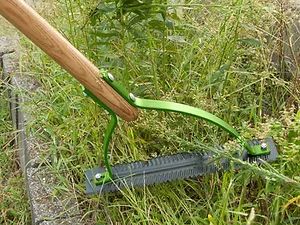
Weed Whip
This is a hand tool that is used to cut vegetation by swing the blade back and forth. It is a rather exhausting tool to use, but can be useful to cut sweetclover or clear an area prior to herbicide low growth rosettes.
Gas Powered Tools
Only volunteers who have completed orientation and attended the corresponding safety training may operate the powertools listed below.
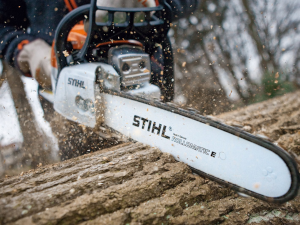
Chainsaw
When it comes to cutting down buckthorn, nothing quite beats a chainsaw. I have cut through my fair share trunks with just a pruning saw, and it is slow and exhausting work; one sawyer at a workday can ease that burden. Given the inherent danger of the chainsaw, the following procedures must be adhered to
- Only the steward can request the chainsaw
- Only equipment provided by the District can be used
- Only one chainsaw per workdays
- There must be two trained sawyers onsite in order to operate a chainsaw
- The operator must wear the appropriate PPE - chaps, helmet with face-shield and ear protection, safety glasses, steel toed boots and gloves

Brushsaw
The second powertool that can be used at a workday is the brushsaw, which is used primarily for thickets and resprouts where the stems are two inches in diameter or less.
The same procedures listed for the chainsaw apply the brushsaw.
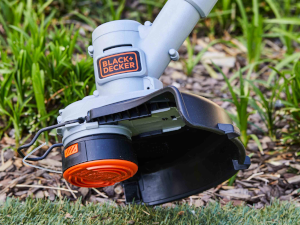
String Trimmer (Weedwacker)
The third powertool that can be used at a workday is the string trimmer, also known as a weedwacker. Whereas the previous powertools are targeting woody material, string trimmers are used to cut herbacious plants, such as grasses or garlic mustard. Unlike the chainsaw on brushsaw, this tool can be requested all year round.
The same procedures listed for the chainsaw apply the brushsaw.

 Volunteering
Volunteering Safety
Safety Wildlife
Wildlife Newsletter
Newsletter